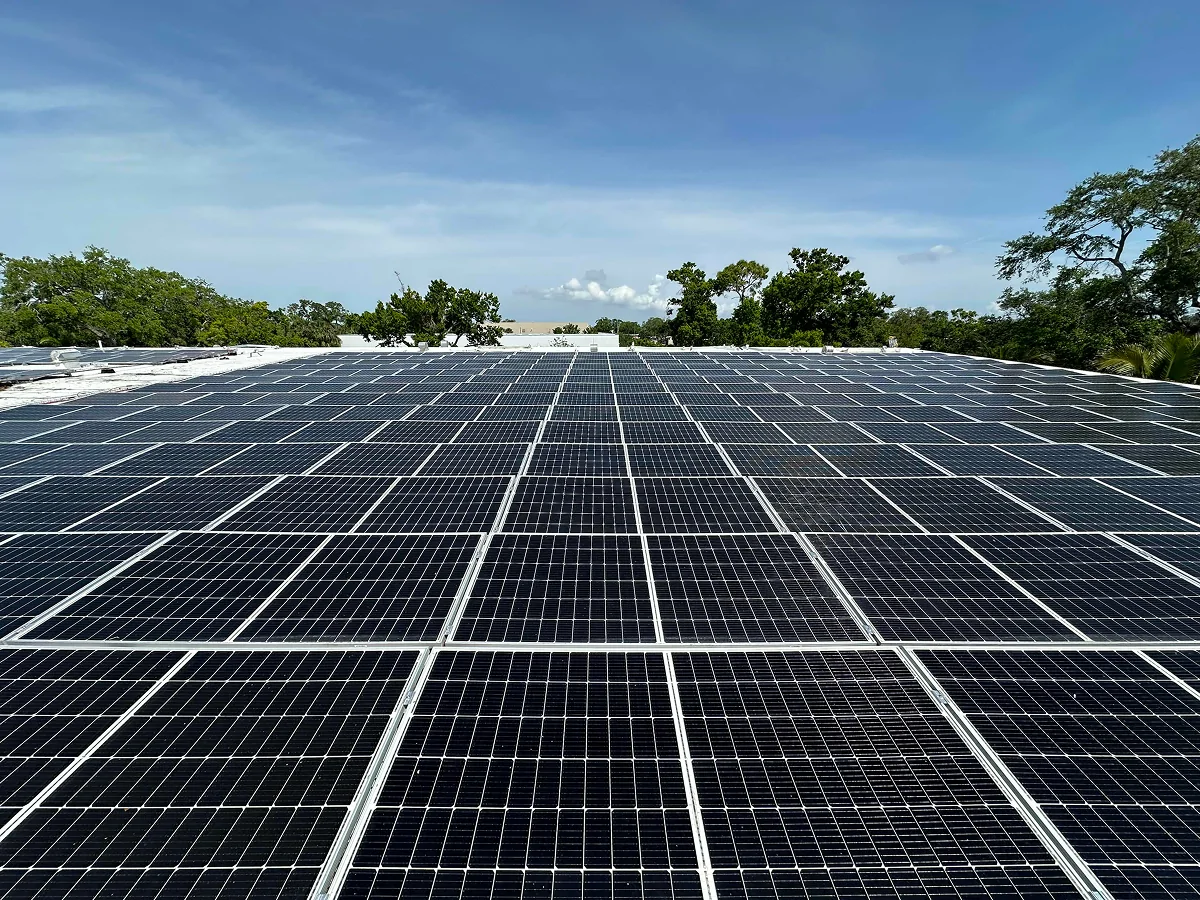The U.S. Department of Agriculture announced sweeping changes to renewable energy funding this week, fundamentally reshaping access to federal solar incentives for rural America.
The new rules eliminate USDA support for large solar farms on prime farmland and ban foreign-manufactured panels in all funded projects. However, the Rural Energy for America Program (REAP)—offering up to 50% project cost coverage and $1 million in grants—remains one of the strongest funding opportunities available for qualifying farmers and small businesses.
This strategic pivot restricts utility-scale development while preserving support for farm-integrated renewable energy systems.
In this article, we break down the implications of the policy shift outlined by the U.S. Secretary of Agriculture, Brooke Rollins, in an official press release on August 19th, 2025.
The financial case of the USDA REAP solar program:
Let’s take a real-world example:
$120,000 Farm Solar Project
- REAP Grant: $60,000 (50% of project cost)
- Federal Investment Tax Credit (ITC): $36,000 (30% of full project cost)
- Net cost to farmer: $24,000
That’s 80% project cost covered before factoring in decades of electricity savings.
The new REAP solar program 2025 restrictions
Effective immediately, USDA has implemented the following changes:
- Ground-mount size limits
- The USDA will not fund any ground-mounted project larger than 50 kW through REAP grants or guaranteed loans.
- Applicants must document historical energy usage tied to the farm or facility. Speculative solar fields do not qualify.
- No more utility-scale solar farms on farmland
- The USDA will not support large solar farms that remove productive farmland from operation under any program, including the Business & Industry Guaranteed Loan Program.
- Domestic equipment requirement
- The USDA prohibits the use of solar panels manufactured by foreign adversaries in any USDA-funded project. This rule strengthens U.S. supply chains and ensures taxpayer dollars support domestic or allied manufacturing.
- Shrinking REAP pipeline
- The Inflation Reduction Act had boosted REAP’s budget with more than $2 billion in renewable energy funding to be distributed through 2031. However, the new rules drastically narrow which kinds of projects can tap into those funds.
Why did the USDA change REAP grant eligibility for solar?
The U.S. Department of Agriculture cited three main concerns:
- Farmland preservation: Tennessee alone has lost more than 1.2 million acres of farmland in the last 30 years, with another 2 million projected by 2027. Similar losses are occurring nationwide.
- Food security: Leaders tied loss of farmland as a threat to America’s food supply and rural heritage.
- Taxpayer accountability: Critique argued that subsidizing speculative, foreign-supplied solar farms distorts land prices and shifts costs to rural communities and consumers.
Who still benefits from REAP after these changes?
For farmers, small businesses, and co-ops, the good news is that REAP is not gone. Instead, the program now focuses on smaller, facility-based, and U.S.-made projects.
Projects that still qualify include:
✅ Rooftop solar on farms and facilities for on-site use
- Barns, storage facilities, warehouses, processing plants, greenhouses, and cold storage facilities are all ideal candidates.
- These projects generate power for the operation itself, and not for selling wholesale energy.
✅ Ground-mount systems (≤ 50kW) with proven energy usage
- Smaller-scale ground systems (roughly 120–150 panels or fewer) still qualify, but applicants must provide documentation of historical use (energy bills) showing demand that justifies the system size.
✅ American-made solar + storage projects
- U.S. manufactured panels are now a requirement to be eligible for REAP-backed financing. It is likely that projects that use not only U.S.-manufactured panels, but also U.S. manufactured batteries, and inverters will be prioritized.
✅ Paired solar + storage
- Battery storage remains a strong case for REAP support, provided it is attached to a right-sized solar system designed to offset farm or facility energy use.
| ✅ Still eligible | ❌ No longer eligible |
| Rooftop/facility-based solar (barns, warehouses, shops) | Utility-scale ground-mount solar farms on farmland |
| Ground-mounted systems ≤ 50kW with proof of historical energy use | Ground-mounted solar > 50kW without usage documentation |
| Solar + battery storage sized to facility demand | Investor or speculative solar fields not tied to local usage |
| Projects using approved U.S.-made equipment | Projects using adversary-manufactured panels |
Which projects no longer qualify for the USDA REAP grant funding?
❌ Utility-scale solar farms on farmland
- The USDA does not fund large solar farms that remove productive farmland from use, regardless of technology or ownership.
❌ Ground-mounted systems over 50 kW
- The USDA excludes most larger systems unless applicants provide documentation of historical on-site energy usage.
❌ Foreign-made solar equipment
- The USDA prohibits panels manufactured by adversary nations in any funded project.
❌ Investor-driven or speculative solar fields
- Projects not directly tied to the energy needs of a farmer, rancher, or small business do not qualify.
What should farmers & rural businesses do next?
PPM Solar recommends three key actions for agricultural producers, small businesses, and cooperatives to navigate these changes and successfully adopt solar.
1. Evaluate energy usage first
- REAP now requires demonstrated demand. Gather 12–24 months of energy bills from your farm, processing facility, or warehouse to establish project eligibility and proper system sizing.
2. Prioritize rooftop over ground-mount systems
- With farmland protection now federal policy, solar installations on barns, warehouses, and other structures will receive priority over land-intensive projects in REAP funding decisions.
3. Source American-made equipment
- The USDA now requires U.S.-manufactured components, and future federal programs will expand these requirements. Select an installer who sources compliant equipment to ensure both current approval and long-term funding eligibility.
How PPM Solar helps you navigate the new USDA REAP Requirements in 2025
For 16+ years, PPM Solar has worked with farmers, cooperatives, manufacturers, and municipalities to design and install high-performance solar systems while helping clients leverage every available incentive.
We help farmers and rural businesses secure maximum federal solar funding under the new, stricter 2025 REAP requirements while ensuring full compliance and optimal financial returns.
Our REAP Grant Expertise includes:
- Proven track record: We secured over $6 million in REAP funding for clients in 2024 alone, with a 95% approval rate.
- Compliance-ready equipment: We exclusively source American-made panels, inverters, and batteries that meet the new domestic manufacturing requirements.
- Expert application support: Our in-house USDA grant writer specializes in the updated eligibility criteria and documentation requirements.
- Right-sized system design: We ensure your project stays within the 50kW ground-mount limit while maximizing your facility’s energy offset.
- Financial optimization: Our clients typically save 80% of project costs through REAP grants (up to 50%) combined with federal tax credits (30%) and other incentives.
The result: Compliant, cost-effective solar installations that qualify for maximum available funding under the new rules.
The Bottom Line
USDA’s new rules close the door on subsidized solar fields on farmland, but they leave the door wide open for farmers and rural businesses investing in right-sized, facility-based solar.
The REAP grant program remains one of the strongest opportunities in the country — covering up to 50% of your project cost and allowing you to get up to $1M in grant funding.
But the new rules mean getting expert help is more important than ever.
Check your project’s REAP eligibility
Our REAP grant team at PPM Solar will evaluate your facility, size your system correctly, and handle your complete application process.
Get Started Today to Secure Your REAP Funding:
👉 Call: (352) 309-7727
👉 Email: mike@ppm.solar
👉 Schedule: Free REAP Grant Eligibility Assessment

